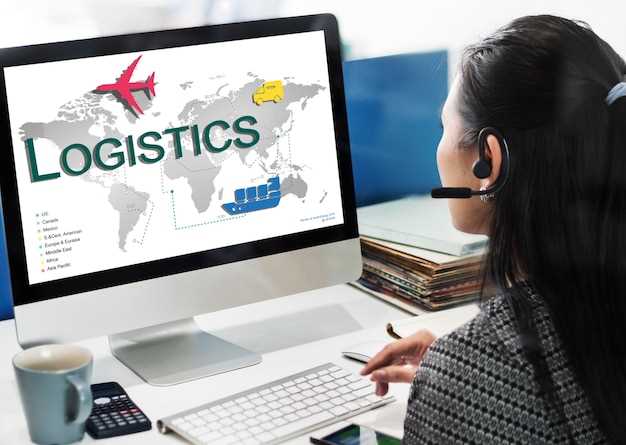Start with eight key questions and verify each answer against real numbers. Weve tested dozens of 3PL partners, and the ones that move quickly from setup to shipment success share concrete benchmarks instead of general promises. When you compare candidates, they seem more credible if you see on-time rates, error rates, and cycle times for pick/pack–these details reveal how they perform in the real world.
Ask where your inventory will be stored and how it moves between facilities. If you use shopify, verify the integration option and whether you can receive updates via email or API. The right option should meet your channel needs and keep stock synchronized across Shopify, marketplaces, and your own store.
Get explicit on onboarding processes: what data is required to start, how long the setup takes, and how returns are handled. Ask about labels, carrier choices, and the place where returns go–the reverse logistics flow should be clear.
Counting performance metrics, request a sample scorecard: on-time performance, damage rate, pick accuracy, and transit visibility. A transparent report lets you compare suppliers side by side and decide which one right fits your operation.
Clarify pricing and billing: what counts as a shipment, what the base fee covers, and what charges may apply for storage, labeling, or value-added services. For budgeting, counting shipments gives you a clear monthly total and helps you avoid surprises.
Finally, assess compatibility with your business: do they meet your peak-season needs, and where will you go for support after hours? If they seem to offer a scalable option, consider a short pilot with yours SKUs to see how their team performs in real life. There, you can confirm they align with your workflows and customer expectations.
Smarter Logistics: 8 Key Questions to Ask a Potential 3PL Provider and 5 Integrations to Consider
Q1. Choose a 3PL with open APIs and real-time visibility to unlock faster decision-making across ordering, sourcing, and demand planning. Ensure the data is available throughout the period, with clear status updates and exception handling for a right view across the supply chain.
Q2. How do you measure and report on-time delivery, and how does your team apply diligence to prevent coverage gaps when a carrier or warehouse underperforms? What is the process for addressing issues and keeping the customer informed regularly?
Q3. Can you show a structured cost model and always provide a transparent view of pricing, including how contracts define service levels, renewals, and any penalties? Also, how do you communicate cost changes as demand or volume shifts, so we can plan ahead?
Q4. Which integrations are available, including ERP, WMS, TMS, ecommerce platforms, and sourcing portals, and how seamlessly do they exchange data so your team can act on available information? Also, how do you handle selling channel data and inventory levels across platforms?
Q5. What is the typical implementation timeline, who participates, and how do you handle counting milestones during onboarding? Do you offer free onboarding and training, and what milestones should we expect in the first period?
Q6. How do you address data security, privacy, and regulatory compliance across regions, including access controls, audit trails, and the findings you have found during reviews?
Q7. How do you scale during demand surges, and what options exist to maintain service levels even during peak periods?
Q8. How will you collaborate with yours teams to drive ongoing improvements, including research and reporting results?
Five integrations to consider:
Integration 1. ERP and WMS links for real-time inventory and order status, giving you a single source of truth for stock levels and replenishment planning.
Integration 2. EDI and ASN flows with suppliers and carriers to reduce manual touches and speed inbound shipments.
Integration 3. Carrier rating engines and transit time data to optimize routes, timing, and cost, with visibility into exceptions.
Integration 4. Ecommerce platform connections across selling channels to sync orders, product data, and returns in real time.
Integration 5. Sourcing and supplier catalogs to align terms, lead times, and quality data, plus automatic updates when contracts change.
8 Key Questions to Ask a Potential 3PL Company for Smarter Logistics; 5 What Integrations Do You Offer
Start by confirming integrations that align with your core systems to keep data accurate and decisions quick. This approach builds a stronger partnership that’s easier to scale today and into the future.
-
What integrations do you offer with our core systems (ERP, WMS, OMS, TMS, eCommerce, CRM), and what types of data do they exchange to support receiving, ordering, and the flow of inventory?
Look for direct API connections, EDI capabilities, and prebuilt adapters. Confirm data fields like PO, ASN, SKU, lot/serial, inventory status, and shipment events to ensure seamless, accurate reporting and faster course corrections.
-
How do you ensure data accuracy and real-time visibility across channels?
Request live dashboards, event-driven updates, and reconciliation processes. Assess how data aligns across receiving, put-away, picking, packing, and shipping to reduce discrepancies and support timely decisions.
-
What is your onboarding timeline and what support is included to get us from signing to steady operations?
Ask for a concrete start-to-operational plan with milestones, a dedicated implementation lead, and a client-facing training path so team members can work confidently from day one.
-
How do you handle volatility and seasonal spikes in volume?
Evaluate how staffing, capacity planning, and buffer stock are managed, plus how your system handles queueing, prioritization, and rapid reallocation to keep the flow smooth.
-
What are your SLAs for critical issues and how is open support handled?
Obtain response and resolution times for high-impact events, plus how status updates are communicated. Confirm available support channels and the cadence of proactive alerts.
-
Can you share client references or case studies that demonstrate tangible outcomes?
Prioritize examples from clients with similar SKUs, volumes, and channels to verify improvements in accuracy, receiving times, and overall working capital impact.
-
What does your implementation course look like and what inputs are required from our side?
Assess the level of collaboration, data cleansing steps, and how your team trains our staff on processes, standards, and reporting routines.
-
How does the integration strategy align with our future roadmap and partnership goals?
Seek alignment on open architectures, upgrade paths, and a joint planning cadence that supports evolving needs and reducing risk as the business grows.
5 What Integrations Do You Offer
-
ERP and Finance integrations: connect to SAP, Oracle, NetSuite, or equivalent platforms to synchronize orders, payments, and cost reporting, enabling accurate P&L and cash forecasting.
-
WMS/OMS integrations: bridge warehouse operations with order management to automate receiving, put-away, picking, packing, and returns, ensuring real-time stock visibility and smoother receiving and ordering flows.
-
E-commerce and marketplace connectors: link Shopify, Magento, WooCommerce, and marketplaces to stream orders and synchronize stock to reduce stockouts and oversell risks for todays channels and campaigns.
-
EDI and carrier networks: establish secure data exchange with carriers, 3PL partners, and suppliers to harmonize shipping, labels, ASN updates, and freight invoices.
-
BI, analytics, and data warehouse integrations: feed data into your preferred reporting tools (Power BI, Tableau, Looker) for accurate reports and faster decisions based on a single source of truth.
Identify goals, scope, and required service levels

Start by defining two to three measurable goals your 3PL must deliver, then tie each goal to a precise scope and service level you can monitor. For example, improve on-time delivery to 98% across core markets, expand coverage to high-demand zones, and cut security incidents by 30% within 12 months. This keeps commercial discussions focused on those outcomes that drive customer satisfaction and cost efficiency.
Map the scope clearly: which processes are covered (receiving, put-away, picking, packing, shipping), which geographies, which industries, and which channels including amazon. Specify product lines and the volume expectations, such as million orders per month, and confirm capacity commitments and available resources, so you can rise above current baselines and avoid gaps when demand spikes.
Set concrete service levels: cycle times for order processing, dock-to-stock, accuracy targets for inventory and picking, and transit SLA windows. Define response times for exceptions and the expected reliability of carrier performance. Build in coverage for peak periods and seasonal spikes to ensure you stay above the required performance bar.
Infrastructure and security alignment: confirm the provider’s infrastructure supports your current load, data interfaces, scalability, and security controls. Require audit rights, encryption at rest and in transit, and access controls for those handling your data, ensuring compliance without slowing operations.
Commercial terms and structure: decide prepaid options if you want predictable budgeting and upfront payment, or postpaid terms with usage-based charges. Align pricing with service levels and any minimums, ensuring the model scales with growth and aligns with your broader commercial strategy.
Measurement and governance: establish a quarterly review cadence, define dashboards and KPIs, and assign accountable roles, being clear on responsibilities. These measures dont rely on guesswork and help you track reliability, on-time performance, coverage, and security events to verify you are meeting those goals.
Data and documentation: request baselines, current performance data, and the ability to generate those reports automatically. Use the data to identify opportunities to improve and to justify changes in service levels as volumes change.
Verify network reach, warehousing capabilities, and last-mile options

Begin with a concrete recommendation: request a current network reach map and a warehouse capabilities list, and verify last-mile options with live data. Among the biggest providers, compare bids today using a standard scoring sheet, focusing on the regions that matter to your business, and identify missing data that could slow growth and that grows with your plans.
During the network check, require a regional coverage chart, peak-season capacity, and transit-time dashboards. Ensure the provider supports integrations with your WMS, TMS, and ERP, with available APIs or EDI feeds you can use today, using a shared data feed. Check references from companys that operate in your target markets and compare their regional coverage.
Warehousing capabilities: facility count, total square footage, storage types (ambient, climate-controlled), and automation level. Distinguish between manual handling and automated flows, and confirm pick, pack, and ship cycles. Validate inventory accuracy and cycle times to fulfill orders reliably, especially for high-demand SKUs that customers expect in retail. Review their practices for quality control and error reduction.
Last-mile options: delivery footprint, carrier mix, service types, and coverage for residential versus commercial areas. Request examples of on-time performance by region and the ability to adapt to last-minute changes. Ask about returns handling and the signing process; clarify whether the company uses direct routes or relies on partners.
Practical checks today: request a sample dashboard with metrics such as OTIF, dock-to-stock time, and dwell time. Ask for references from customers in your particular vertical. Build a simple list to compare providers on network reach, warehousing capabilities, and last-mile options. Signing a contract should reflect clear expectations and scalable terms.
Understand pricing structure, fees, and renewal terms
Compare base rates and add-on fees side by side to assess total cost over a 12-month period. Request an itemized quote that lists setup, monthly platform access, storage, handling, and per-order charges, including any surcharges. This fact helps you count usage and spot where costs might creep in.
Choose a pricing method that matches your operation: a traditional flat monthly fee, per-unit charges, or volume-based tiers. Assess how fees scale with count and activity, and verify which items are fixed versus variable. Prioritize a model that supports your peak seasons and still keeps the budget predictable.
Clarify renewal terms: auto-renewal, renewal notice window, and price escalation. Ask whether rates are locked for the term and if there’s a cap on increases. Compare renewal terms to prior contracts to spot any drift and ensure you won’t face surprise jumps at the end of the term.
In California, confirm any state-specific charges, taxes, or regulatory handling costs. Ask whether there are regional surcharges and how they are calculated so you can fulfill compliance without hidden fees. There’s value in knowing exactly what’s included on your invoice and what remains through renewal.
Check integrations and visibility: ensure the 3PL can connect with your ERP and WMS, including real-time inventory data, order status, and analytics dashboards. Automated data feeds and straightforward reporting improve visibility, helping you measure performance and adjust plans quickly.
Discuss terms of service on behalf of your company: clarify payment timing, late fees, and refund policies. If the relationship will span multiple years, confirm price adjustment mechanics, notice requirements, and what constitutes a renegotiation trigger. Ideal terms keep your operation aligned with growth goals while protecting your margins.
| Fee Type | Описание | Typical Range (USD) | Charged When | Renewal Note |
|---|---|---|---|---|
| Setup/Implementation | One-time onboarding and system configuration | 100–1,000 | Contract start or Go-Live | May be waived for long-term commitments |
| Monthly Platform/Management | Access to WMS/ERP portal and ongoing support | 50–400 | Month-to-month | Can adjust at renewal; verify cap if possible |
| Хранение | Inventory holding cost per pallet per month | 5–20 | Monthly | Typically volume-based; negotiate tiered rates |
| Receiving/Put-away | Inbound handling per receipt/batch | 0.20–1.00 | Per receipt | Can be reduced with consolidated inbound |
| Picking/Pack | Order fulfillment charges | 1.00–5.00 | Per order | Lower per-unit when SKU count is high |
| Per-Unit/Per-Order | Variable costs tied to volume | 0.05–0.50 | Each unit or order | Negotiate caps for high-volume periods |
| Outbound Carrier Fees | Carrier charges passed through | Varies | At shipment | Usually pass-through; confirm invoicing method |
Assess data visibility, reporting, and tech compatibility
Step 1: Demand a data visibility blueprint that gives you real-time access to key metrics for orders, inventory, returns, and rates. Todays volatility requires the most valuable insight from a single source of truth you can rely on, with only accuracy guiding decisions and without manual pulls.
Map data sources and confirm tech compatibility. The companys infrastructure should support an API-first approach, standardized data formats, and predictable latency. Particularly for a retailer that uses ERP, WMS, and TMS systems, you need clean data mapping so what you see in dashboards matches what is in your systems. Proximity of data sources matters for latency; ensure data from warehouses near you reduces delays and improves decision speed.
Ask about customization and reporting. They should offer custom dashboards and configurable reports that you can schedule, export, or embed in your own tools. Ensure you expect data ownership, access controls, and privacy safeguards. The platform utilizes encryption in transit and at rest, with role-based access and audit logs so customers can see who touched which data.
Evaluate data quality and automation. Look for accuracy checks, automated reconciliation, and near real-time data feeds. Avoid relying solely on manual reconciliation; the vendor should give you automated alerts when mismatches occur. Research the root causes of any gaps and how they fix them. Similarly, the platform utilizes multiple data sources to cross-check figures and improve accuracy. Returns data should link with stock levels to explain return rates and inventory impact.
Run a practical pilot to validate the setup. Feed a large amount of data, connect with your ERP/WMS, and compare reports to your own manually tracked metrics. Research any discrepancies and adjust mappings before full deployment. Ask what service levels apply to data availability, and what happens if data latency exceeds thresholds. Ensure pricing is transparent and that the vendor can meet your expectations with real-time visibility for customers and retailers alike.
What integrations do you offer, and how do they connect with our systems
Recommendation: Prioritize a 3PL that offers robust, out-of-the-box integrations to your ERP, WMS, OMS, and e-commerce stack, with real-time data sync, clear mapping, and secure APIs. This ensures current orders, shipped statuses, and inventory updates stay in sync, reducing errors and accelerating decisions.
Connectors should support REST, GraphQL, EDI, and file-based feeds, with webhooks for updates on status changes such as shipped or delivered. Expect bi-directional data flow and the ability to map and transform fields to increase accuracy.
Look for a track record of minimal outages and quick recovery, with auto retries and clear error logs. Ask how errors are surfaced to your teams and how partners can access the same data via dashboards or API calls. A robust approach reduces volatility in decisions and helps businesses doing more with less during peak periods.
Types of connections matter: ERP-to-3PL links, WMS updates, TMS for routing, and commerce platform integrations for ordering and fulfillment. The more tools they offer, the less you need to assemble a custom solution. Check whether your particular tech stack can align with their connectors, and whether updates are available in near real time. This supports higher accuracy and faster response to changing conditions.
Ask about the partner ecosystem and the fact that their integrations are designed to scale with your growth. Ensure onboarding and ongoing maintenance, plus proactive updates that notify you when issues occur. The ability to track shipments, inventory, and order status across systems helps businesses doing more with less, and supports higher service levels for customers.

 8 Essential Questions to Ask a Potential 3PL Company for Smarter Logistics">
8 Essential Questions to Ask a Potential 3PL Company for Smarter Logistics">
